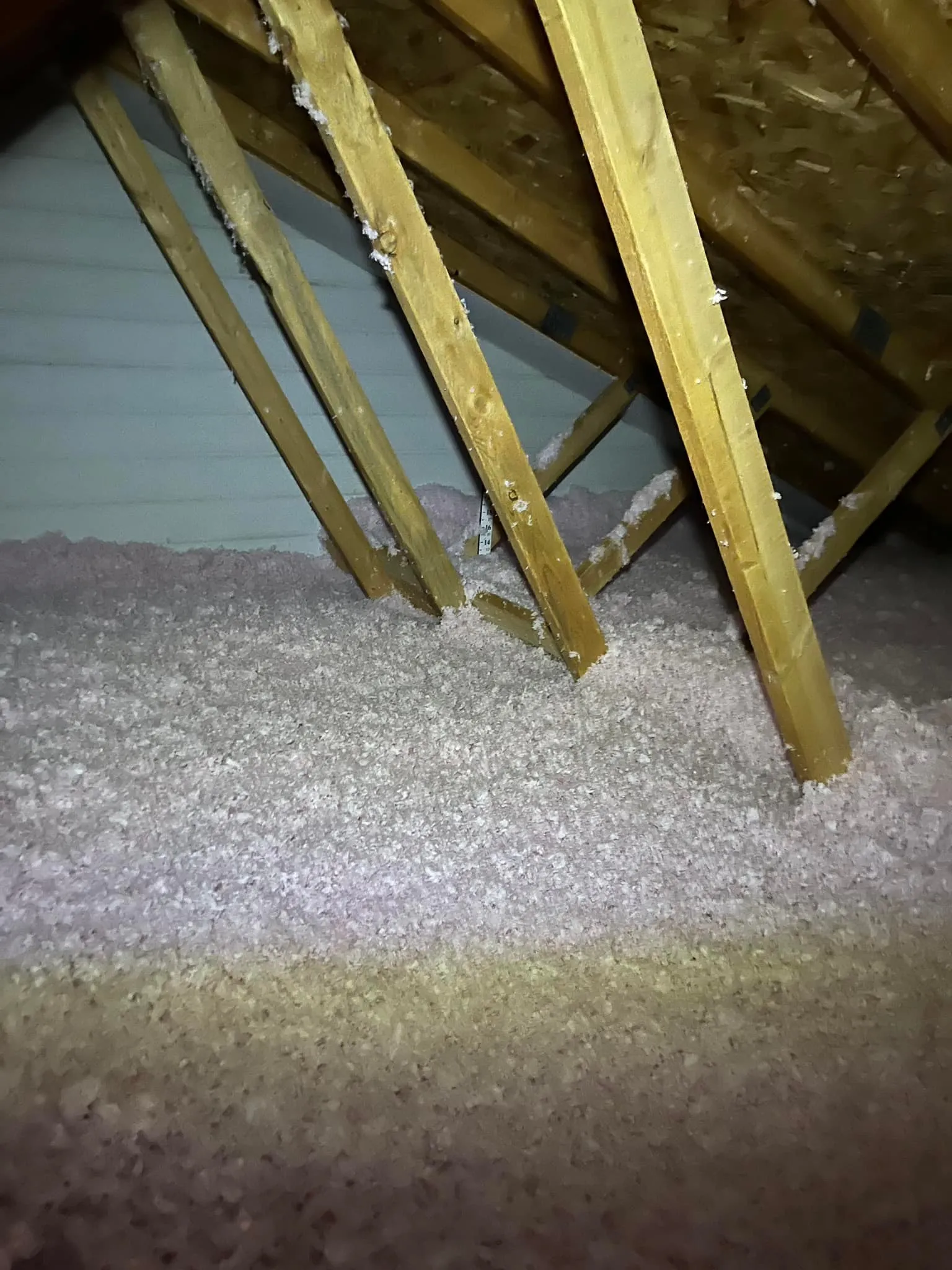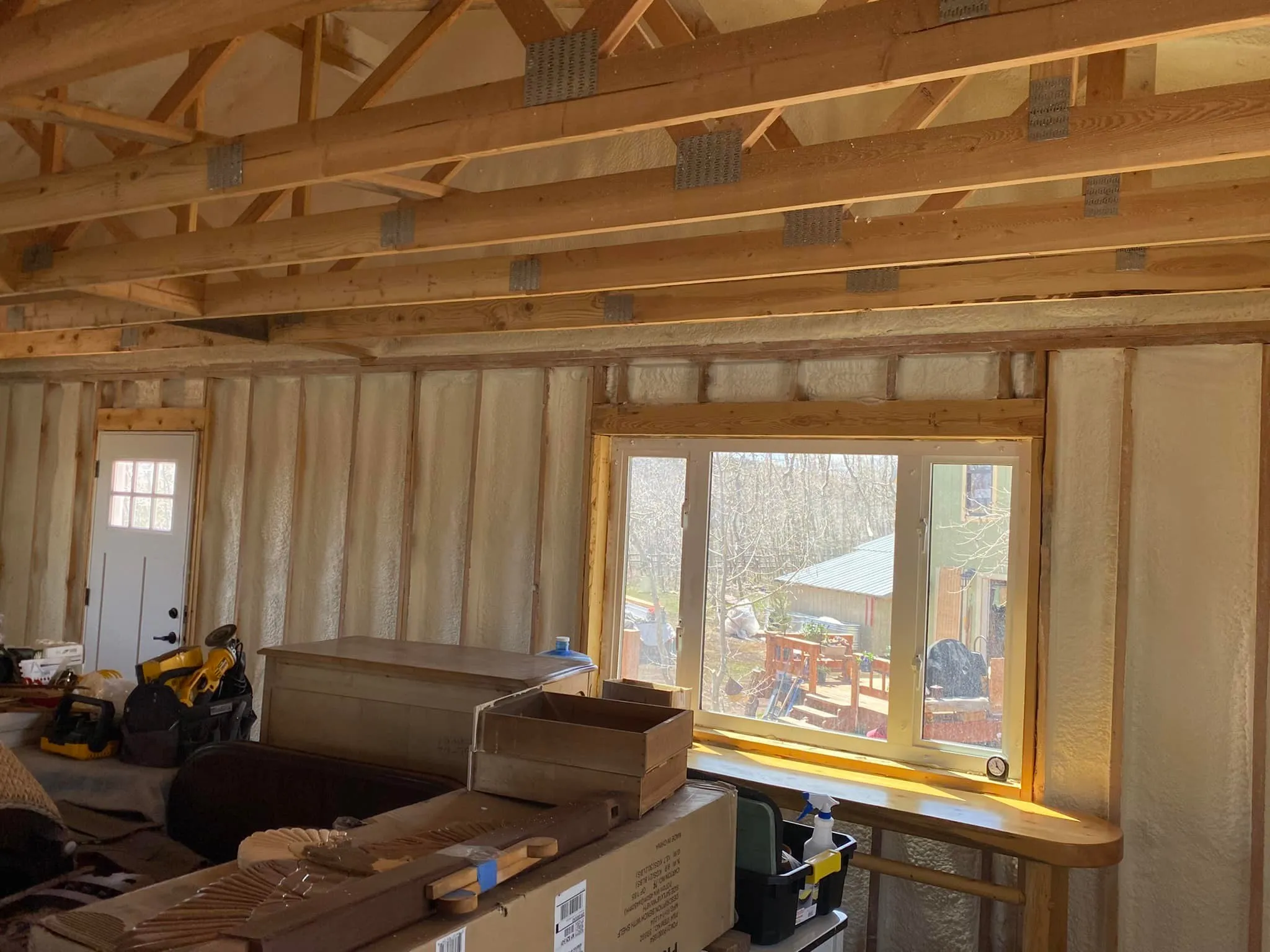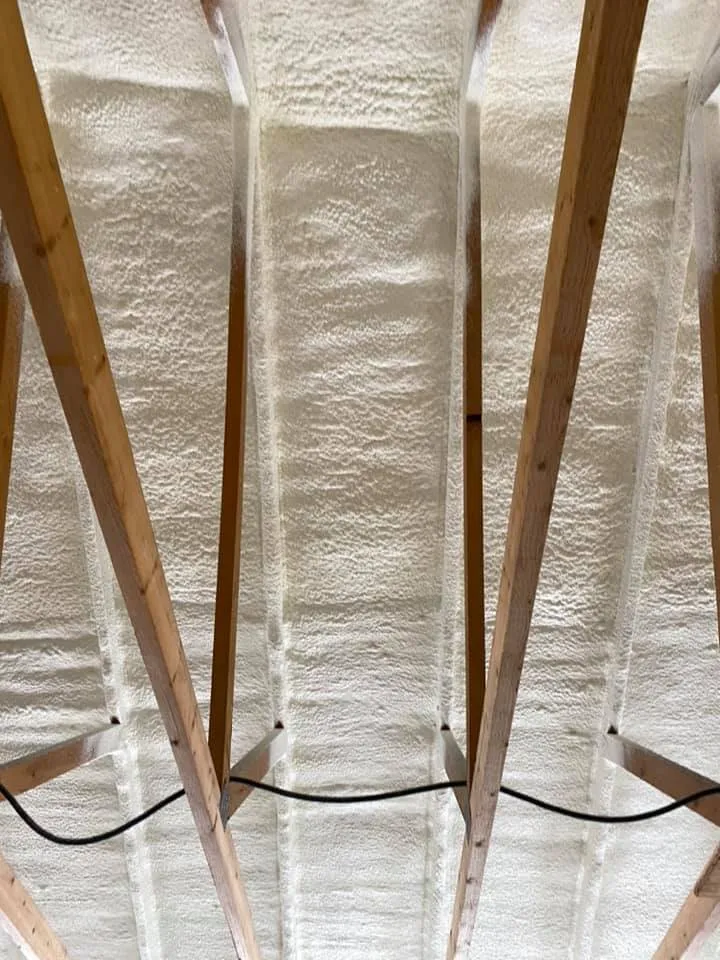
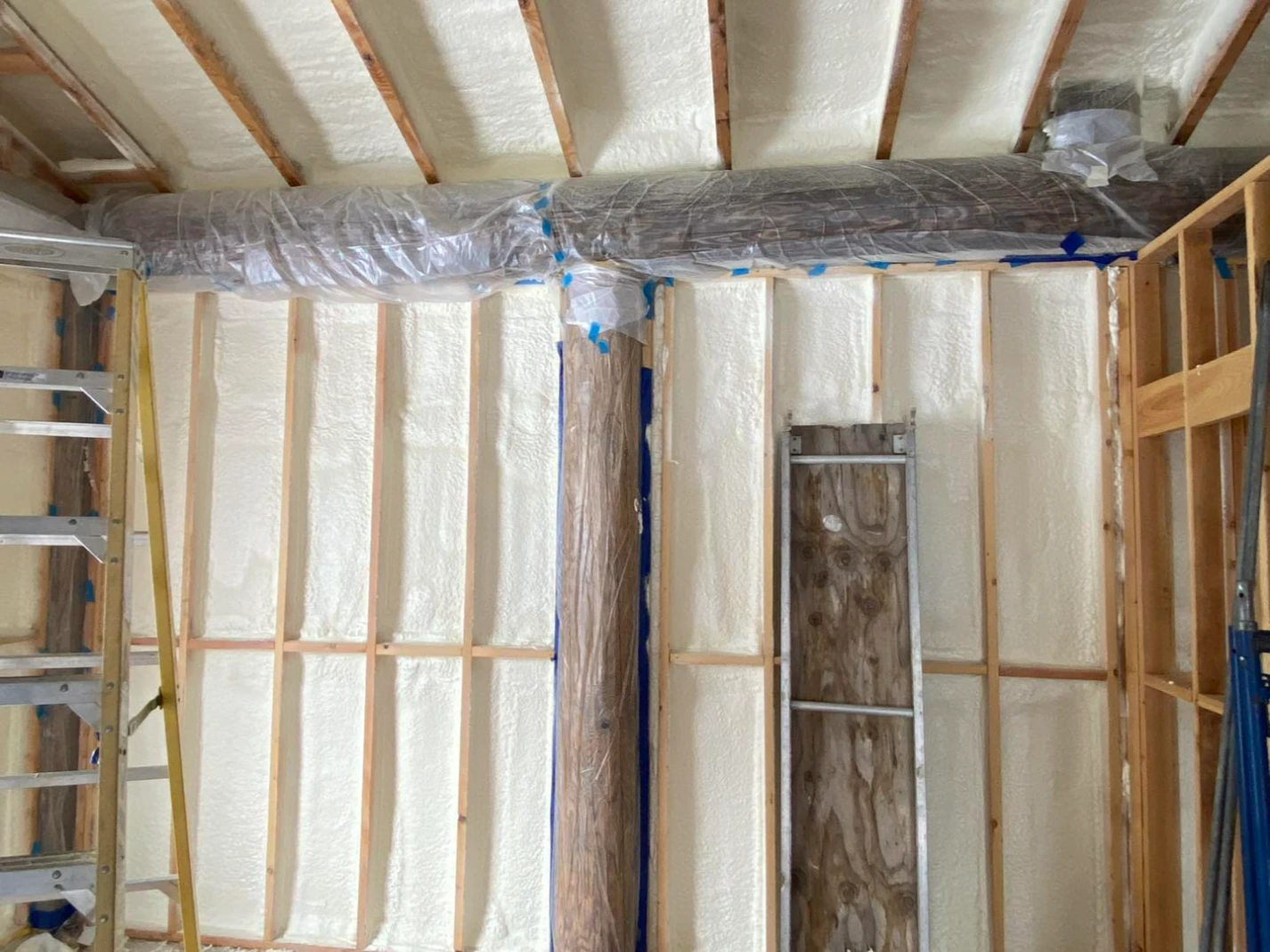
Spray foam insulation can offer clear benefits in Afton, WY, where seasonal extremes create wide temperature swings. For homes in this region, closed cell spray foam improves energy retention and resists moisture, while open cell options help with sound absorption and indoor air sealing. The return depends on application area, building age, and exposure to wind and snow.
Homes in Afton face sub-zero winters and dry, windy conditions year-round. Poor insulation increases heat loss, drives up energy use, and causes long-term wear on HVAC systems. Spray foam creates a continuous barrier that reduces thermal bridging, blocks air leaks, and stabilizes indoor temperature levels. This guide outlines key differences, local relevance, and factors to weigh before choosing.
High Country Solutions works year-round in high-altitude residential and commercial environments across Lincoln County. Practical experience across various insulation types and challenging builds shapes the comparisons and recommendations included here.
| Insulation Type | Air Sealing | Moisture Resistance | R-Value per Inch | Sound Dampening | Expansion/Adhesion | Best Use Cases |
|---|---|---|---|---|---|---|
| Open Cell Spray Foam | High | Low | ~3.7 | High | Expands significantly | Interior walls, soundproofing |
| Closed Cell Spray Foam | Very High | High | ~6.5 | Moderate | Strong adhesion | Roof decks, basements, crawlspaces |
| Fiberglass Batts | Low | Low | ~3.2 | Low | Requires vapor barrier | Attics, wall cavities |
| Blown-In Cellulose | Moderate | Moderate | ~3.5 | High | Settles over time | Attics, retrofits |
| Mineral Wool | Moderate | High | ~4.0 | High | Rigid fit | Fire-rated applications |
| Specification | Open Cell Spray Foam | Closed Cell Spray Foam |
|---|---|---|
| R-Value per Inch | ~3.7 | ~6.5 |
| Vapor Barrier Capability | No | Yes |
| Expansion Ratio | 100:1 | 30:1 |
| Density | ~0.5 lb/ft³ | ~2 lb/ft³ |
| Permeability | High | Very Low |
| Structural Reinforcement | No | Yes |
| Application Temperature Range | >40°F | >40°F |
Afton sits at 6,200 feet elevation and experiences harsh winters with lows below 0°F and snowfall over 100 inches annually. Winds from Salt River Range create wind-driven infiltration that strains standard insulation.
Apply closed cell spray foam on basement rim joists and crawlspaces to cut ground-source cold transfer. This tactic protects plumbing and improves heating efficiency.
Use infrared thermal imaging before and after installation to document air leakage improvements and identify any missed areas.
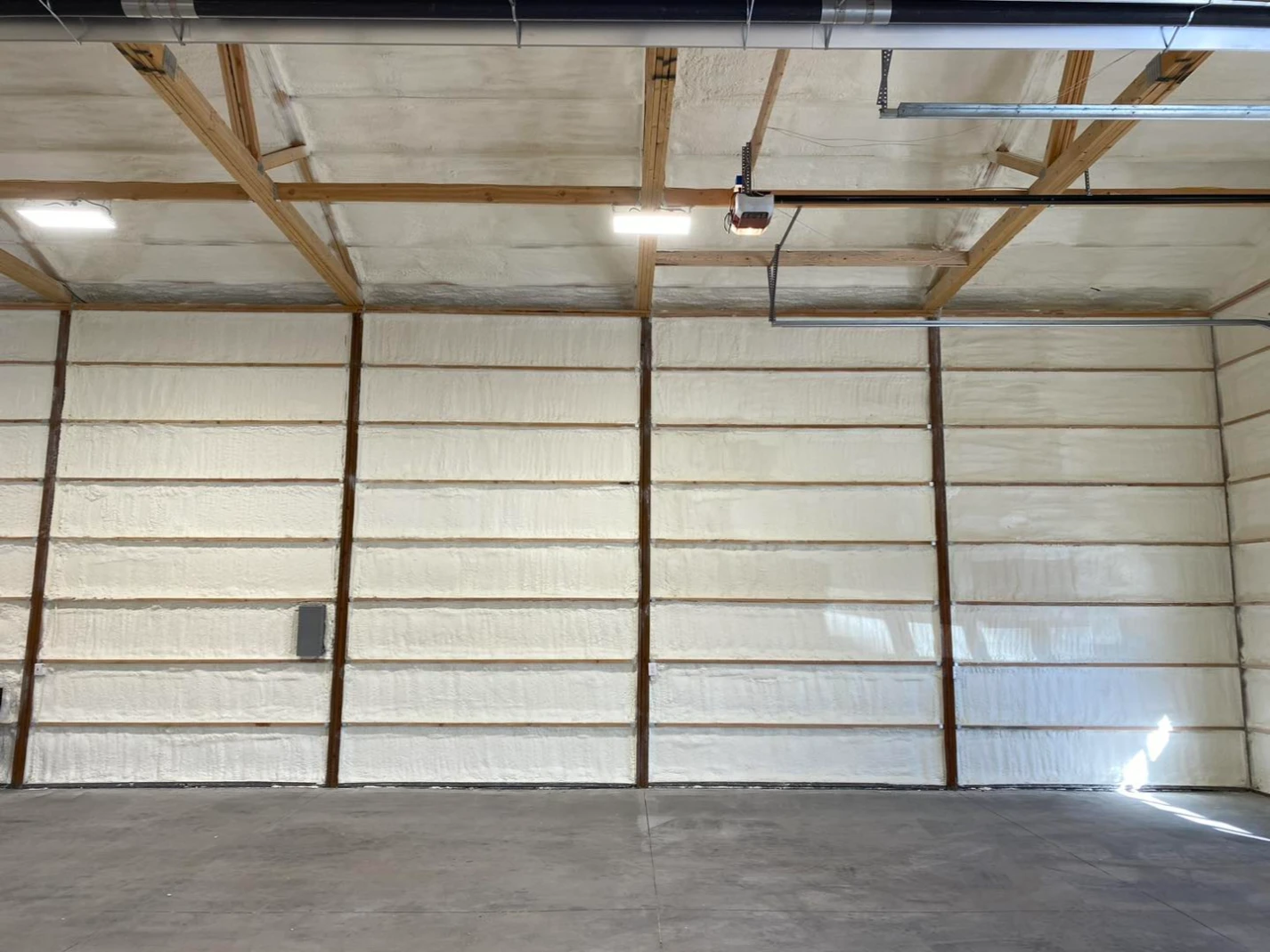
High Country Solutions provides several insulation options that apply directly to home performance in Afton:
Spray foam performs better in air sealing and moisture control. For Afton’s winter climate, closed cell foam offers superior thermal protection and durability.
Not easily. Retrofits usually require removal of drywall or sheathing to access cavities. Blown-in cellulose or dense pack can be alternatives.
Both open and closed cell foams can last 30–50 years if properly installed and protected from UV or physical damage.
If installed correctly and fully cured, it does not release harmful substances. Ventilation during installation is critical.
Spray foam insulation is effective in homes across Afton, especially when applied in roofs, crawlspaces, and basement walls. The material resists thermal transfer, blocks drafts, and controls indoor moisture levels in extreme climates. The choice between open and closed cell depends on the location of use and moisture exposure.
Retrofits may require invasive access, so application is most efficient during remodels or new construction. Code compliance and ventilation should be planned in advance.
For homes in Afton, WY, insulation solutions must be matched to both climate conditions and building structure. High Country Solutions can recommend material types and application methods based on proven experience in local conditions.
Reach out via email at [email protected] or call (307) 248-9063 to discuss your insulation project or arrange a site review.
Inspect annually for signs of physical damage or UV exposure in exposed areas. Sealed surfaces typically require no further attention.
Yes. Foam should be coated with thermal barriers like intumescent paint or drywall for fire code compliance.
Smaller HVAC systems may be more efficient. Reevaluate ventilation rates to avoid stale air in tightly sealed homes.
Foam can deter pests, but it is not rodent-proof. Inspect perimeter and entry points regularly.

